The DMP-A6 was a huge success for Eversolo earlier this year thanks to its winning blend of value for money while still having a quality feature set. Eversolo’s DMP-A8, the newest tier in the lineup, feels like the natural progression of the hi-fi industry’s journey into the streaming age.
In this Eversolo DMP-A8 review, we’ll dive into the details of the network streamer, compare it to its predecessor, and help you make an informed decision in your search for audio perfection.
In a hurry?
Here are some of the key differences between the Eversolo DMP-A6 and DMP-A8:
| Eversolo DMP-A6 | Eversolo DMP-A8 | |
|---|---|---|
| Width | 27cm | 38.8cm |
| Flash | 32 Gbyte | 64 Gbyte |
| Power Supply | SMS | Dual Hybrid (Liner PS + SMS) |
| DAC | ES 9038Q2M2 | AK4191EQ (Digital) |
| AK4499EX (Analogue) | ||
| DSP | No | Yes (up to 192kHz) |
| Pre-Amplifier | No | Yes |
| Inputs | 1 x Coaxial | 1 x HDMI ARC |
| 1 x Optical | 2 x Coaxial | |
| 1 x USB-C (Audio) | 2 x Optical | |
| 1 x USB B (Audio) | ||
| 1 x RCA | ||
| 1 x XLR | ||
| Outputs | 1 x RCA | 1 x RCA |
| 1 x XLR | 1 x XLR | |
| 1 x Coaxial | 1 x Coaxial | |
| 1 x Optical | 1 x Optical | |
| 1 x USB 3.0 (Audio) | 1 x HDMI IIS (Audio) | |
| 1 x HDMI (Audio / DSD) | 1 x USB 3.0 (Audio) | |
| 12v Trigger | No | Yes |
What does the Eversolo DMP-A8 do?
What doesn’t it do?
The Eversolo DMP-A8 is distinct among music servers at its price level thanks to its large functionality set.
It stops short of being a full-on mini-system, as you’ll still need an external power amp if you’re not using active speakers, but this all-in-one solution serves as a network streamer, DAP, DAC, and preamp with a host of connectivity options to boot. The scope of its operation is admirable. Combined, you should be able to find a function here to please audio enthusiasts and everyday users alike.
We’ll cover this in greater detail later, but the DMP-A8 is a great way of fitting high-resolution streaming into any ordinary domestic environment, with HDMI eARC – letting you ditch your in-built TV speakers if you haven’t already and upgrade to stereo home entertainment. It’s also compatible with more widely used streaming services like Spotify Connect.
While Spotify doesn’t let you realise the full potential of lossless audio (yet), this does mean the DMP-A8 can blend into your living room without being so specialised that it’s unusable for everyone besides the audiophile under your roof. Of course, if you’re not interested in that sort of thing, the DMP-A8’s primary function as a high-performance, high-resolution network streamer ought to satisfy you.
It supports almost all ultra-high sampling master recording formats available, including CD-quality like FLAC, WAV, and APE, as well as MQA and DSD512 processing.
You can use the accompanying Eversolo control app to navigate large network and local libraries, and play through services like Tidal, Qobuz, Deezer, and Amazon Music, with support for internet radio, too. And while it’s still in the process of full Roon certification, you can also use the A8 as a Roon endpoint.
OK, let’s take a breather. We’ve just hit you with a lot of information, so let’s ask, does all of this necessarily justify the price jump from the Eversolo DMP-A6? Largely speaking, no, you’d be able to find these features supported in both models.
So what’s the difference?
What makes the A8 a notable step up from the A6 – besides the more obvious expansion of preamp capabilities and overall size – is its move away from the two ESS Sabre DACs and opting, instead, for dual flagship AKM DACs.
This capability, coupled with its ability to handle sample rates up to PCM 768Khz/32bit, is supported by an easily accessible DSP engine which lets you tweak and tailor audio output based on your taste, system, and acoustic requirements.
What’s the result? Well, there’s a notable shift in sound quality and tonality. It’s larger, deeper, and more spacious, yes, but it’s also warmer and more lifelike instead of the, potentially, more analytical approach of the A6’s Sabre DAC.
As mentioned, the addition of a fully balanced preamp section in the A8, supporting both RCA and XLR inputs and outputs, enables more flexibility when setting up your hi-fi system. You could even connect your turntable and phono stage if you liked, which makes this streamer feel more like a full music hub if anything.
While some in the wider hi-fi community have been critical of the preamp’s performance when compared to separate equipment, opting instead to bypass this section completely, it is still a nifty feature that we think ties together the A8 as a whole; a one-box music experience.
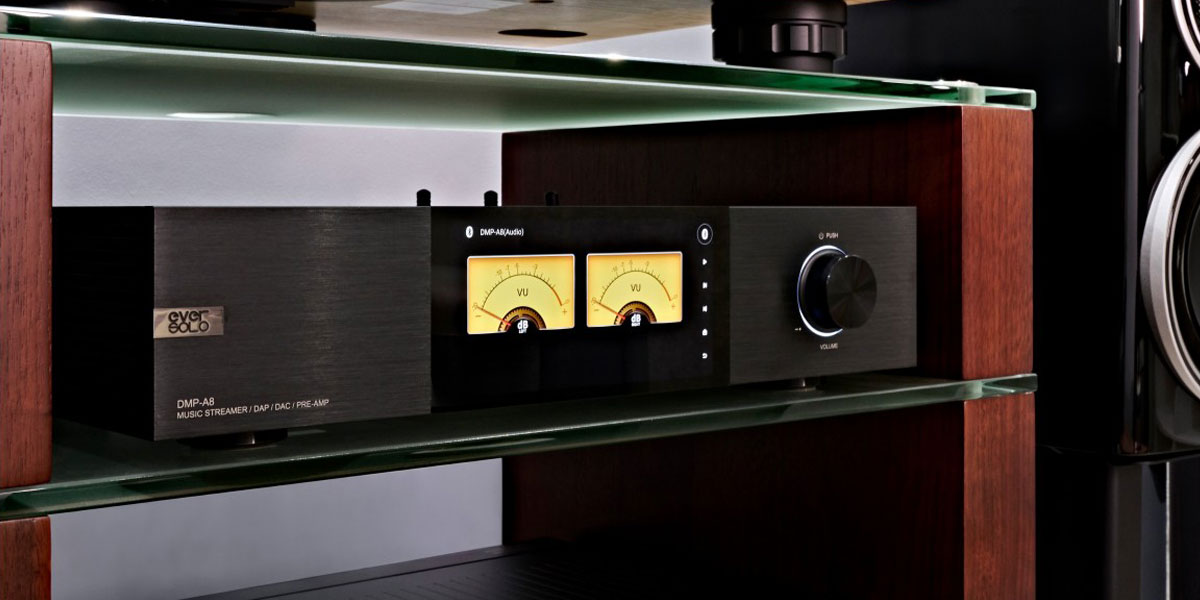
Eversolo DMP-A8 Review
Build quality and interface
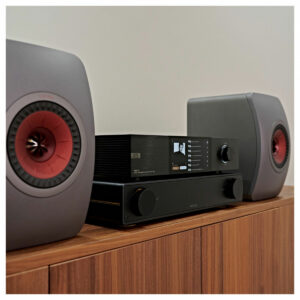 There’s a sense of familiarity when first unpacking the Eversolo DMP-A8. It retains the same basic look as its predecessor, the A6, and doesn’t look too dissimilar from Eversolo’s DAC-Z8 DAC & Headphone Amplifier either.
There’s a sense of familiarity when first unpacking the Eversolo DMP-A8. It retains the same basic look as its predecessor, the A6, and doesn’t look too dissimilar from Eversolo’s DAC-Z8 DAC & Headphone Amplifier either.
That being said, it’s anything but basic.
Eversolo’s current network streamers, including the A8, use a substantial six-inch LCD touchscreen, sporting high-definition menus that can be mirrored to the app for distance control.
Unlike other streamers on the market that depend solely on a mobile interface, this is by far one of the more user-friendly experiences you’ll find with the choice between both phone or front panel as control points.
The touchscreen spans the unit horizontally, preserving the same 90mm slimline height of its sibling streamer.
However, the DPM-A8’s chassis has been extended widthways, adding around 10cm. This is to accommodate the additional features of the A8, no doubt about that, but it does also contribute a bit of extra weight and presence to the unit.
The similarities in appearance also apply to the materials used in manufacturing. Unless you turn it around or flip it upside down, there’s not a bolt or screw in sight on the business end of the A8 thanks to its solid CNC machined aluminium body.
As well as being highly durable (Eversolo themselves describe this as aviation-grade aluminium) the materials used play a crucial role in noise-mitigation. You’ll even find rubber pads dampening the feet. This might be a minor aspect of building quality, but it does prevent external vibrations from rattling through the streamer.
Let’s touch a little bit on the multifunction volume dial to the right of the screen. With the addition of analogue processes, the R2R control of the Eversolo DMP-A8 is a notable upgrade from the A6, with minute volume adjustment with high precision and low distortion.
However, it is not without its drawbacks. Particularly if you’re using this in a quiet environment, one point of contention is that you can hear the relays in the resistor ladder network clicking when you make any sort of volume change. Some find it annoying, others think the atmosphere of analogue machinery is absurdly cool. It kind of is a marmite-type situation.
Obviously, this won’t be an issue once you’re sitting back and playing your music.
Functionality aside, this streamer is, overall, just distinctively modern. It’s not trying to harken back to the vinyl age, be retro-chic, or anything like that. From its phone-like touchscreen to the three wireless antennas, it’s proud to be part of the digital age and that will rub off on any hi-fi system it’s in.
Eversolo have even included the Bluetooth remote control this time around, which is another neat addition that was only an optional extra in their previous streamers. Comparatively, the DMP-A8 offers far more flexibility and control than the DMP-A6. It even features a 12v trigger which, although a small addition, does give you an extra inroad for system integration.
Controls and connectivity
The Eversolo Control App is a tinkerer’s paradise.
Released for Android and iOS, it acts as an extension of the six-inch LCD touchscreen located on the front of the A8 and gives you full control over settings, streaming services, source selection, source levels, six different DAC filters, and DSP adjustments. It even presents VU meters and spectrum analysers in landscape mode if you want to sit back and watch the dial dance to the music.
Manufacturer control apps on the hi-fi market have a reputation for being a bit… let’s say, difficult to use. They can be glitchy and laggy, poorly maintained, or overloaded with menus. This can make high-end high-fidelity audio a little intimidating to newcomers as well as frustrating for long-term enthusiasts.
Thankfully, that reputation doesn’t stretch to Eversolo’s app in the slightest.
In fact, it’s been praised by the wider hi-fi community for its superior performance and we can’t help but agree. It also currently undergoes regular updates, which shows that Eversolo are optimising the app based on user feedback. This is a nice cherry on top of the DMP-A8, considering we’ve seen some fairly run-of-the-mill controller apps in other areas of the market.
Of course, if you’re not too keen on adding an extra step to your listening experience or don’t have the space on your smart device, you can always opt to use apps like Tidal Connect or Spotify Connect to cover the streaming fundamentals. They work just as well, and you won’t have any trouble setting them up. This also makes it easy for guests to connect if you want to show off a little.
There are some downsides, though.
As previously mentioned, the Eversolo DMP-A8 isn’t fully Roon certified. Even without this certification, however, it’s still perfectly capable of functioning as an endpoint in a Roon ecosystem providing that a Roon server already exists somewhere in your setup. However, if you’re a big fan of Roon for music streaming, this might be something to think about if you’re not willing to wait for Roon’s certification to be finalised.
Regardless, the DMP-A8 still has plenty to offer.
If you want to completely disconnect (or you have an unreliable internet connection), Eversolo have built an M.2 NVMe SSD slot into the A8, nestled at its base, that’s compatible with up to 4 TB of storage space. This isn’t exactly groundbreaking, and it’s something that A6 users will already be well acquainted with, but it’s a welcome comeback.
With an offline library, the A8 allows uninterrupted access to a huge range of music and better control over audio quality without dips and losses caused by a shaky connection. Users can store high-resolution files that offer superior sound compared to some streaming services which may not always host the hi-res version of the song you’re looking for.
Ultimately though, one of the biggest upgrades between the A6 and the A8 is its fully balanced preamplifier section.
The preamp in the DMP-A8 offers what we perceive to be a smooth, warm, and musical sound signature. Maybe not anything crazy when compared to separates, but let’s be honest, it’s the compromise you make for a one-box solution. If you have the space and money for a fully separate hi-fi system and don’t mind the extra boxes, then DMP-A8 probably isn’t going to compete. What all-in-one box does though?
On that note, if you don’t fancy scrapping all of your equipment to use the A8 as a complete central music hub, it can function as a standalone network streamer, DAC, or as a preamp independently, and has just as many connectivity options as it does uses in your system.
From HDMI eARC and USB B to XLR and RCA, the Eversolo DMP-A8 offers a plethora of external input options, including turntables which is somewhat of an oddity for a network streamer. On the output front, it caters to just as many audio setups with RCA, XLR, coaxial, optical, HDMI IIS (a highly requested addition for external DAC integration), and USB 3.0 (with audio as well as additional storage).
Comparatively, the DMP-A8 offers more flexibility and control than the DMP-A6. While the earlier model was well-received, the added connectivity and controls of the DMP-A8 place it a notch above, going above and beyond in the name of versatility.
Dual power supply and dual DACs
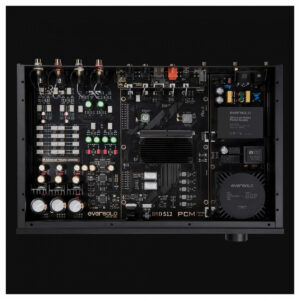 Enough about what’s on the outside of the DMP-A8, let’s talk about what’s on the inside. If you pop the hood, you start to get an idea why it commands a price tag more than twice that of its predecessor.
Enough about what’s on the outside of the DMP-A8, let’s talk about what’s on the inside. If you pop the hood, you start to get an idea why it commands a price tag more than twice that of its predecessor.
Is it twice as good?
Well, we’ll cover that in a little bit, but Eversolo, time and time again, have stated their mission is to provide a premium level of technology to a wider audience, boasting globally sourced, handpicked components specifically selected to provide a sound quality that punches about its price tag.
The largest and most noticeable new addition here is the dual hybrid power supply. Why have Eversolo gone out of their way to upgrade the power supply, you might ask? Because noise is a notorious spoilsport.
Noise can significantly degrade the sound quality of your system, especially when you start to add new circuits to your system as Eversolo have. The dual power supply in the DMP-A8 goes a long way in addressing this issue.
By using two independent power supplies – one comprising a linear power supply with a toroidal transformer specifically tailored for the analogue circuit and the other a switching mode power supply designed for digital processes – potential interference between the two sections is effectively eliminated, providing the groundwork for reliable audio processing.
Speaking of reliability, we’ve also seen the return of the high-precision Accusilicon femto clocks that first made an appearance in the Eversolo DMP-A6 Master Edition. Clearly, this was an addition well-received by fans of the brand. Timing is a critical aspect of audio reproduction and the dual clocks in the DMP-A8 ensure that each note is rendered with higher accuracy regardless of sampling rate.
However, despite the power supplies, clocks, circuits, capacitors, and resistors, the key upgrade for many will be the new DAC chips.
While the DMP-A6 employed the ES 9038Q2M2 (and that was very good in its own right for the price of the streamer), the A8 uses two flagship AKM DACs, specifically the AK4499EX and the AK4191EQ, which employ Velvet Sound Technology.
These are renowned for their exceptional sound quality and contribute significantly to the DMP-A8’s rich performance. In practical terms, this translates to higher USB processing capability, supporting DSD512 Native and PCM768/32bit. The optical and coaxial ports also support DSD64(DOP) and PCM192/24bit.
Naturally, the Eversolo DMP-A8 has streaming and pre-amp capabilities, but if you really wanted to, it’d have no difficulty being the standalone DAC in your system as well when combined with other equipment.
Sound quality
So far we’ve talked a lot about the build quality and innovations of the DMP-A8 in comparison to its predecessor, but we’ve only really hinted at the sound quality. And we get it; no one buys a nearly £2k network streamer just because it’s built like a tank.
Sound quality is the key focus here, so if you’ve jumped straight to this part, we totally get it. We’re excited. You’re excited. Let’s see what Eversolo have achieved.
The first thing to consider is that there was never going to be an enormous leap in sound quality between the DMP-A6 and the DMP-A8. That’s partially because the A6 was already such a capable streamer to begin with.
While it’s understandable to have higher expectations for a much higher price, it’s important to note that there are tangible reasons to go for the A8 that contribute to this jump, especially considering the added functionality.
Having addressed our initial quibbles, when you listen to the Eversolo DMP-A8, you’re struck by richness and fullness that isn’t quite there in the A6. As mentioned, it’s not necessarily a bigger sound, more that it’s deeper and more textured. You’re able to pick out more subtleties of the track, with greater imaging and wider soundstage presentation. It’s the A6, just more.
Of course, having two flagship AKM DACs on board doesn’t hurt, but that’s also the key differentiator. The difference between the AKM and the ESS DACs is that the A6 appears a little more clean and analytical as a result. Some might like that, some might not, but there is definitely an edge to the A6’s output that’s curved in the A8.
It’s all just a bit more silky smooth.
In the context of streaming, if you’re not going to use the onboard DACs, you might be able to get a similar (or maybe even slightly better) quality by connecting the A6 to an external third-party DAC – think Chord Electronics’ Qutest or Topping’s DX9 Flagship DAC. This may even save you a little money overall.
However, you do then have to consider the price of extra equipment, extra cables, and extra space in your system.
The A8, on the other hand, is probably more comparable to streamers or DACs around £1k if you’re going to use it as a standalone unit. Again though, it holds the advantage here by being a one-box solution with a fully balanced preamp section to boot.
The DMP-A8’s onboard Digital Signal Processing (DSP) Engine offers an impressive level of sound optimisation too, including a fundamental level of room correction if you’re into tweaking your system based on the acoustics of your listening space. The experience is seamless.
You can easily access this feature through the home page of the controller app or the touchscreen of the A8. The menus are easy to navigate, and behind the scenes, you can alter PEQ parameters at certain frequency bands, FIR filters, HPF/LPF, dynamic compressor, and delay for left and right channels according to your speaker placement.
You can even adjust loudness to give low and high frequencies more of the spotlight over the mids.
It’s completely configurable and perfect if you have specific preferences or genres. But even if you don’t, the Eversolo DMP-A8 will perform just fine without adjustments.
Finally, let’s talk a bit about the preamp. We should start with the positives because there are a few limitations (and we use that word with all kindness, because “downsides” is too harsh). The preamp section is fine. It’s good even. The sound quality is clean, it’s smooth, and it’s great that it was included in the first place. The stepped volume control, capable of working in 0.5 to 3dB steps, is also another nice touch.
It just doesn’t quite hit the high notes compared to other components of this network streamer. It’s a solid performer, but not the star of the show. In comparison to the DAC and streaming capabilities, the preamp of the DMP-A8 probably won’t be your main reason for purchase. Nevertheless, it’s a good addition to an otherwise stunning device.
Who is the DMP-A8 suited to?
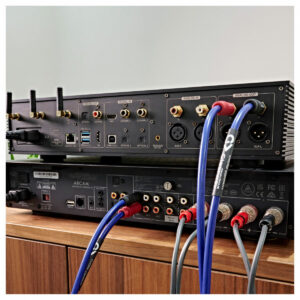 To our eyes (and ears), the Eversolo DMP-A8 is one of the best options for network streaming currently available at a mid-to-high-end price point. Eversolo have made a significant step forward in satisfying the needs of the hi-fi enthusiasts whilst also opening the gates to a wider audience.
To our eyes (and ears), the Eversolo DMP-A8 is one of the best options for network streaming currently available at a mid-to-high-end price point. Eversolo have made a significant step forward in satisfying the needs of the hi-fi enthusiasts whilst also opening the gates to a wider audience.
For anyone out there seeking a comprehensive, compact solution that doesn’t compromise on digital audio, it’s honestly one of the best options under £2000.
That being said, it’s important to clarify that the DMP-A8 isn’t merely the next generation of the DMP-A6. It represents a new tier in Eversolo’s product lineup. While it builds on the successes of its predecessor, it also brings more to the table aimed at ultimate musical purity and accuracy.
With a plethora of digital inputs and Eversolo’s expansion into the analogue domain, the DMP-A8 provides flexibility in connecting pretty much anything – not only in your music setup but your home entertainment system as well.
Simply put, if you’re still running an analogue system, but see network streaming as the future of hi-fi, the DMP-A8 will easily accommodate you and whatever equipment you’re running, including turntables.
What’s more, you can use the network streaming functionality to fill in the gaps in your disc collection as well as compare the differences in audio quality between a physical and digital collection. The DMP-A8 is a platform for pretty much any popular streaming services you can think of, with further support for local network protocols.
On the other hand, with a friendlier price tag, the DMP-A6 delivers a performance that will satisfy most ears, even those of audiophiles, as well as a good proportion of the same features.
For anyone dipping their toes into the world of hi-res streaming without the need to accommodate already existing equipment, it’s an excellent place to start. While the DMP-A8 does offer a little extra – think advanced DSP algorithms and a preamp section – these features might not revolutionise your listening experience.
This comes back to what we mentioned previously. The DMP-A8’s sound quality isn’t leaps and bounds better than the DMP-A6, seeing as the bar was already pretty high. Instead, the DMP-A8 is for people who will appreciate the difference in audio quality provided by the upgraded DACs, internal clocks, and power supplies.
So unless you’re a hardcore enthusiast with a keen ear for subtle nuances in sound, the DMP-A6 should serve you well. If you’re sold on streaming as the future of hi-fi, and you’re all about hearing every last bit of that file without analogue disruption, the DMP-A8 was made for you.
Pros and cons
| Pros | Cons |
|---|---|
| The sound quality is exceptional, with a soundstage and timbre that's more textured than the A6 | Currently not fully Roon certified |
| Flagship AKM Velvet Sound DAC technology supported by ultra-precise femtosecond clocks | You can select a large number of input/output combinations, but not all are compatible |
| Features a very well-designed user interface that can be controlled from the front panel or cast to your phone (iOS or Android) | This is subjective, but some may find the resistor's operational noise (the clicking) annoying when adjusting the volume |
| The DSP engine gives you an added level of fine-tuning and fundamental room correction | More than double to price of the DMP-A6 with a lot of stiff competition from separated setup |
| Includes a preamp with a dedicated linear power supply for high-quality analogue sound |
FAQs
Who makes Eversolo?
Eversolo’s parent company is Zidoo Technology Co Ltd. Founded in 2014, Eversolo Audio Technology Co Ltd. was able to draw upon a wealth of industry knowledge and expertise with the goal of delivering premium high-fidelity home audio equipment to a wider audience.
What does a network streamer do?
A network streamer plays audio files from various sources over your home network. This device can access and play music from your computer, NAS drive, or online streaming services, like Spotify, Qobuz, and Tidal, providing you with a wide variety of music options.
Will a DAC improve my sound?
A DAC can significantly improve sound quality. It converts digital audio information into an analogue signal that your speakers can output as sound. By using a higher-quality DAC, you’ll experience more accurate conversion and more detailed playback, which is a must for hi-res enthusiasts.
Final thoughts
Despite all the buzz around the Eversolo DMP-A8 Network Streamer making audiophile-quality sound available to a wider audience, at just under £2k, we can hardly call this an entry-level piece of kit. It doesn’t even really fit in with the mid-range hi-fi equipment. Instead, if you’re looking for a taste of the high-end that’s also an irresistibly comprehensive music hub, the DMP-A8 is worth every penny.
For those willing to invest, the A8 will let you downsize your hi-fi system with minimal compromise on sound – currently rivalled only to separates at this price point – and its array of user connectivity options offers exceptional value for money.
Simply put, it stands as a love letter to both pure digital precision with analogue realism.
Want to experience the unique warmth of vinyl? The A8 will let you do that, but you may need some extra bits and pieces in your system. We cover this and more in our guide to getting the most out of your turntable. We’ve also outlined some of what we think are the best bookshelf speakers currently available on the market, with plenty of options that would complement Eversolo equipment.

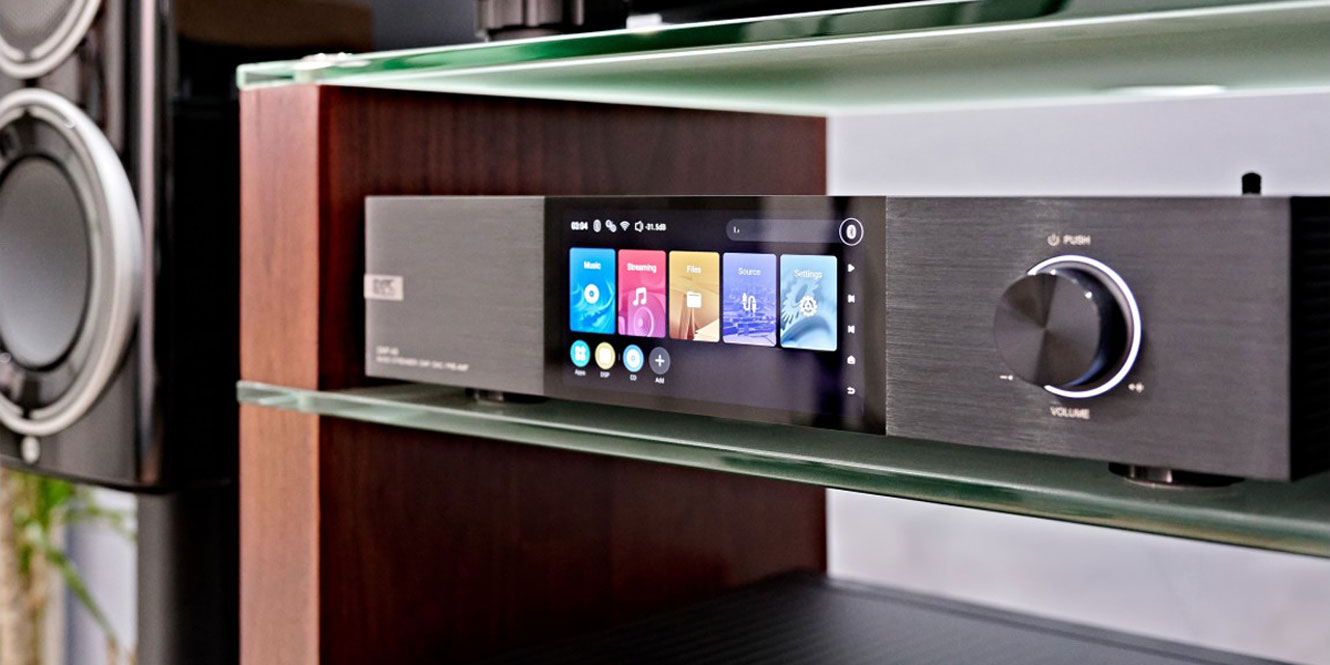

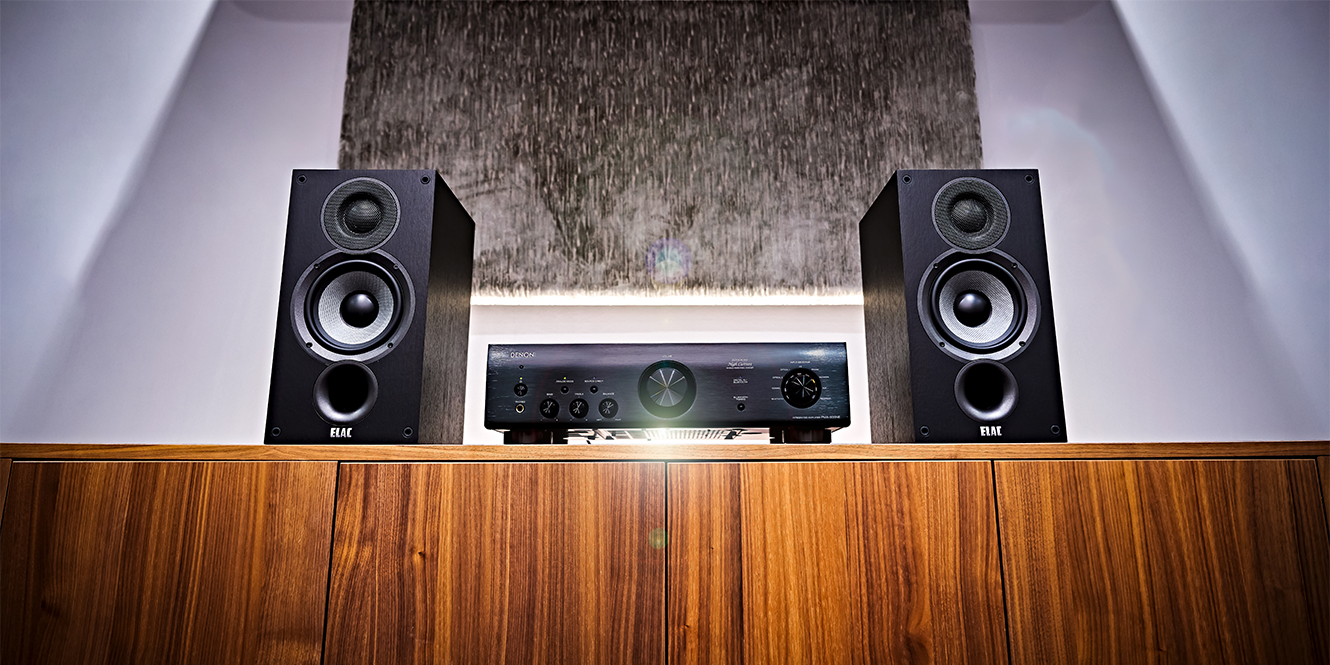
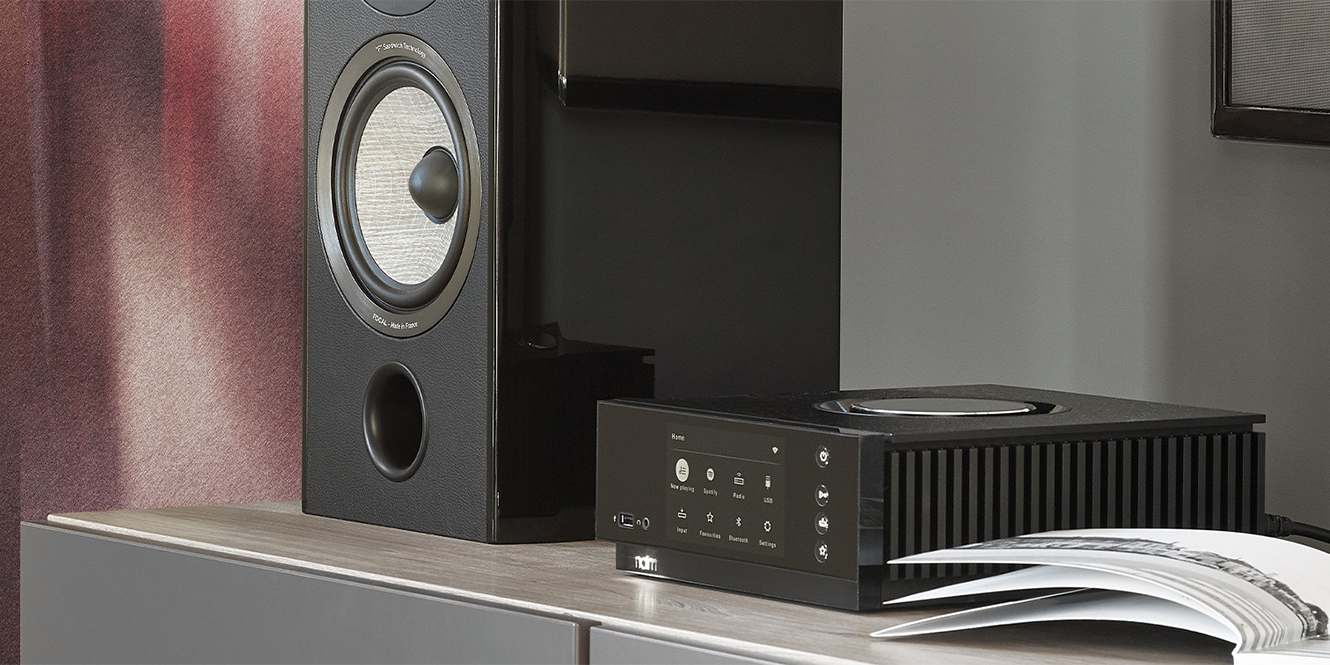
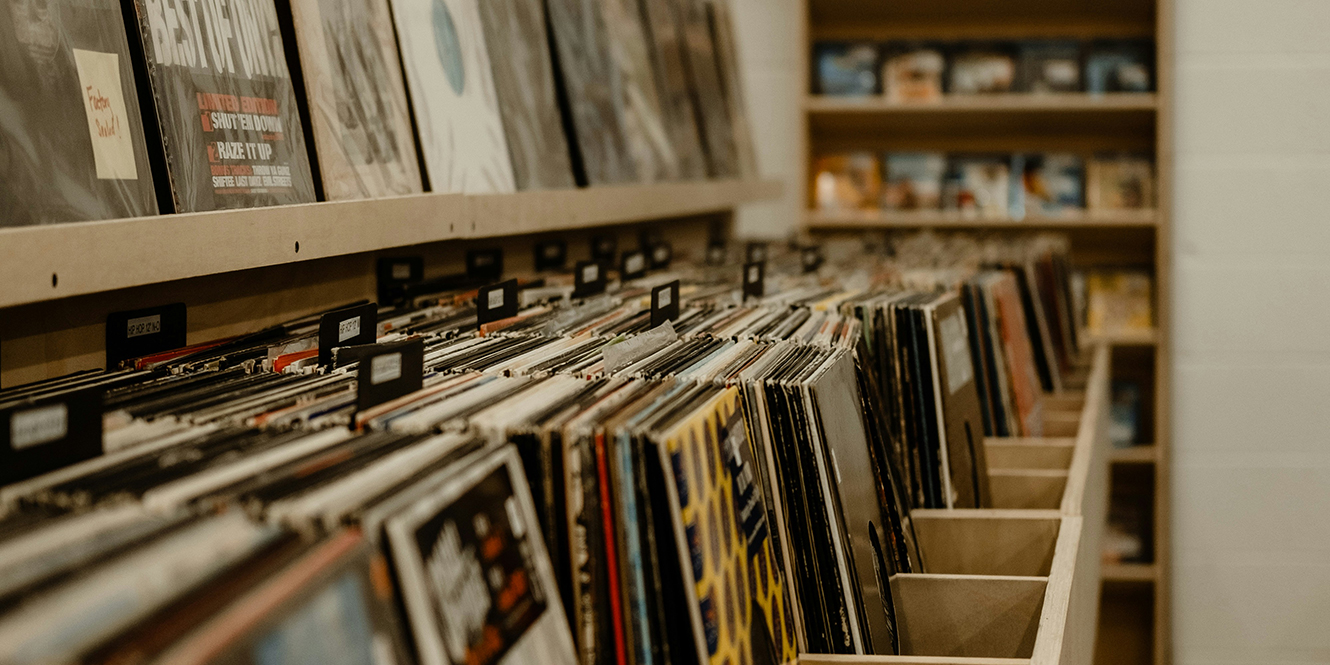
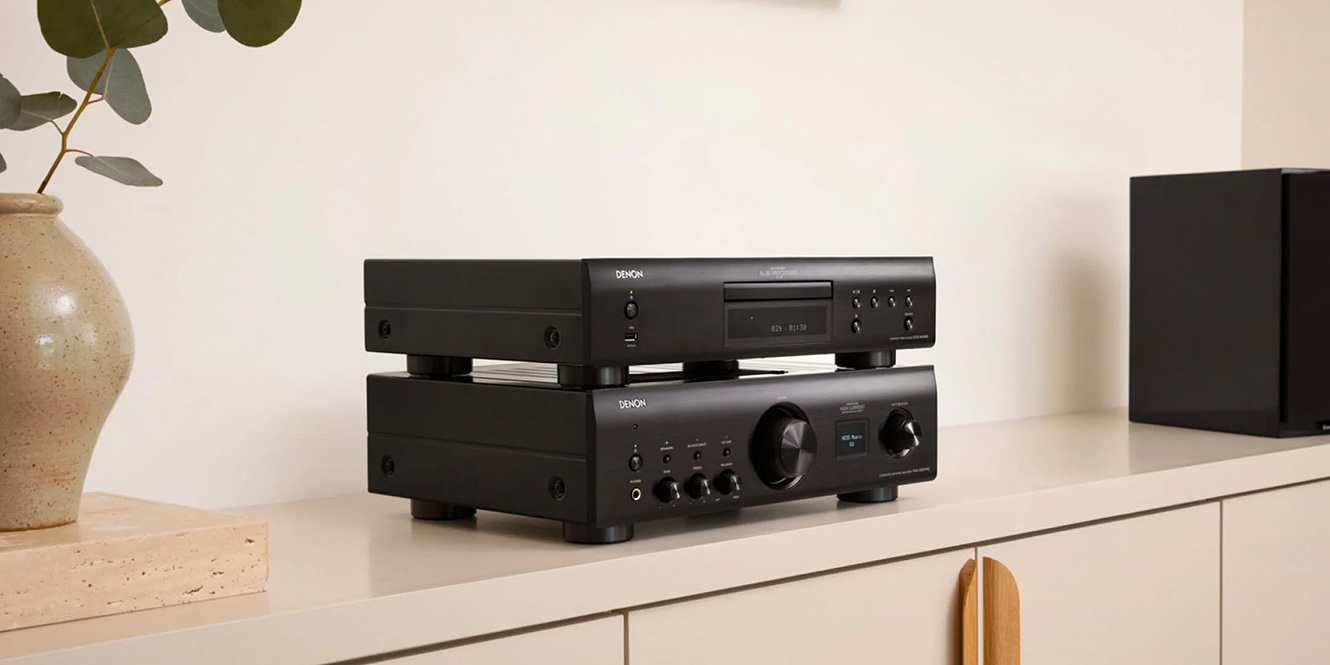
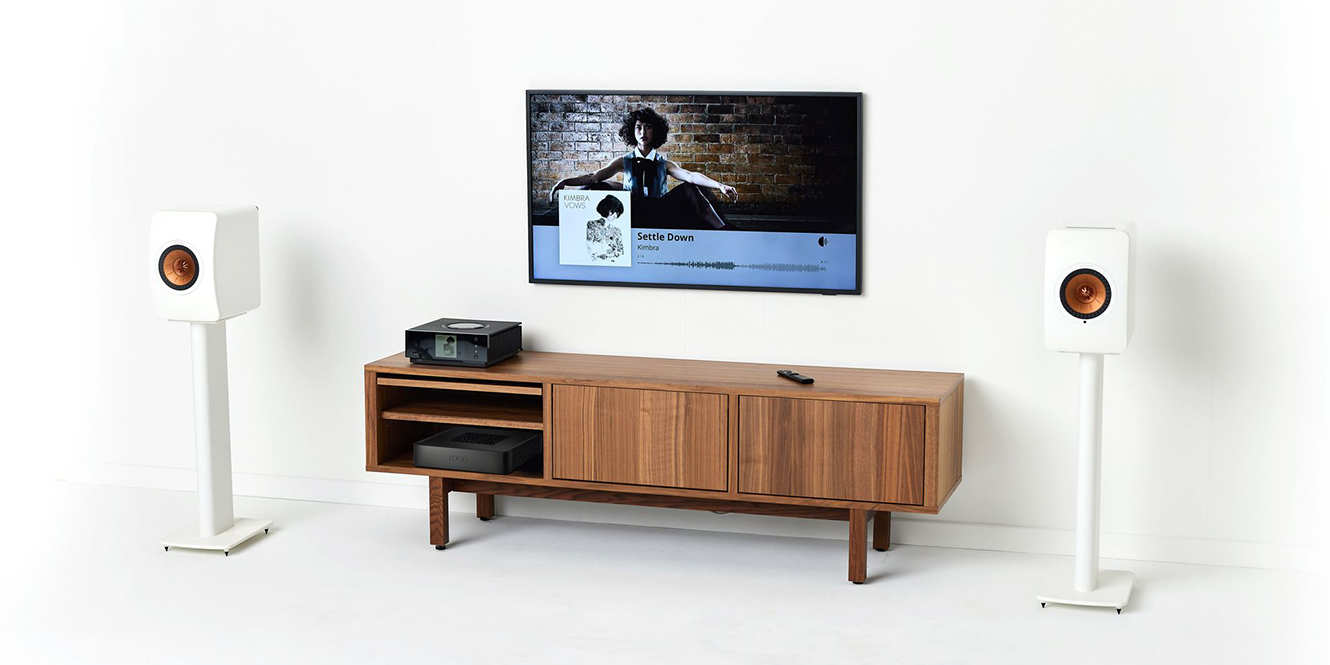





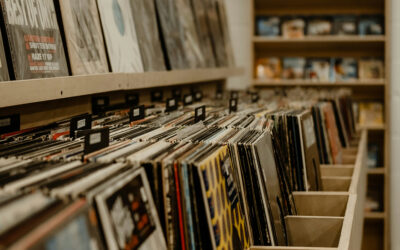
I’m looking at the A8 as a possible upgrade to my Bluesound Vault 2. I currently use an ethernet connection to my Vault > McIntosh 352 amp > tower speakers. The vault does’nt seem to go much above CD quality so I recenlty got a Qutest DAC, so now, Vault > Qutest over optical > amp. But I really don’t see much , if any, improvement in SQ. So now I’m looking at the A8, but my question is, if the DAC in the A8 is so good, why would anyone then need or want the Qutest. A review I just read talked for paragraphs about how good the A8 DAC was and then he included the Qutest in the chain. Why? So now, if I want the best sound possible, do I keep the Qutest, return it and get the A8, or get something else – like the Aurender N150 or N200?
Hi Dan,
Thanks for your question. If you’re interested in Eversolo for streaming, the best of both worlds would be to stick with the Qutest and pick up the DMP-A6. Otherwise, if you haven’t noticed a significant improvement in sound quality by upgrading to the Qutest, there may be a bottleneck somewhere else in your system. Out of interest, what are you using in the rest of your setup?
Hi, I’m trying to decide between the DMP-A6 or the Chord Mojo 2 as primarily a DAC from my laptop to headphones & perhaps speakers. I know the DMP-6 has other features too, such a blue tooth streaming, but which of the 2 has better DAC quality/function? DMP-8 is out of my price range. Thank you. Regards, Stuart.
Hi Stuart,
Thank you for your comment. If you’re primarily looking for something to use with a laptop and headphones, I’d recommend the Chord Mojo 2. The DMP-A6 doesn’t come with a headphone output and while you’d easily be able to connect to a headphone amplifier, the added price of external equipment might tip the scale. The Mojo 2 has a headphone amp built-in and its portability means you’d be able to take your laptop on the go too. The DMP-A6 is probably the better choice if you already have a headphone amp, and amp and speakers in your setup, but also remember it’s not portable. Hope this helps.
I had ripped my library of over 3,000 CDs in compressed Flanc format and is satisfied with the sound quality when listen with Sony’s former signature walkman series (NW-WM1Z former signature walkman + TA-ZH1ES headphone amplifier + MDR-Z1R flagship headphone), though, the sound quality is not as good as listening to the relevant CDs in the main hifi system in the living room (Sony SCD1 CD player + Music Fidelity integrated amplifier kW550 + B&W 801 Series 3). The purchase of Eversolo DMP-A6 nine months ago was intended to replace Sony SCD1 in the main hifi system in the living room. However, the sound quality of Eversolo DMP-A6 in the main hifi system was disappointing and not acceptable. The sound quality was even worse than the same music played with Sony’s former signature series listened over headphones.
Questions:
1. Will the use of Eversolo DMP-A8 be a good replacement of Sony SCD1 CD player in terms of sound quality in my main hifi system?
2. Will the use of Eversolo DMP-A8 produce better sound in my main hifi system than listening the same music over headphones in my Sony’s former signature walkman series?
3. Will Eversolo produce yet a newer and better model than Eversolo DMP-A8 in less than a year from now as it did after DMP-A6?
Please respond by e-mail.
Many thanks.
Best regards,
Alex To
Hi Alex,
Great questions. As sound quality can be fairly subjective from listener to listener, the best way to answer these would be to listen to the Eversolo DMP-A8 yourself. It’s currently on display in our showroom and available for demonstration by appointment through our Contact Us page if you would like to get in touch via email. Hope this helps. Unfortunately, we don’t have the necessary information to answer your final question.
I recently purchased a pair of KEF LS 60 active speakers. I have been in Belize for 5 months but return to Vancouver in April and can’t wait to pick them up and take them to our new 860 sq. Ft. cabin on one of the gulf islands. I have my digital music stored now on a Bluesound Vault but that is hooked up in a different place. Is the A8 a good system to download my digital library (ripped CD’s and hi rez downloads) into as well as to stream Tidal thru?
Hi Jim,
Thank you for your question. That sounds great.
The DMP-A8 fully supports streaming through Tidal, Tidal Connect and a host of other music services.
There’s a slot on the underside of the DMP-A8 designed to accommodate up to 4TB SSDs. While the SSD drive would need to be bought separately, that’s a huge amount of potential storage for your hi-res music library, along with the DMP-A8’s streaming, USB, or NAS compatibility in the meantime.
The DMP-A8 also features CD playback and ripping capabilities if you connect an external USB CD drive, meaning you could continue to grow your stored library.
If it helps, you can find a copy of the DMP-A8’s user manual on our website which provides a little more insight on all of these processes.
What does the noise sound like when changing the volume on the A8? Does the sound come from the speakers when changing the volume or does it come from the unit itself? I am concerned if it comes through the speakers as I often change the volume based on the song I am listening too, and sometimes listen very loudly. I don’t want loud popping sounds coming through my speakers at over 100db.
Thanks!!
Hi Ray,
The DMP-A8 clicks when the volume is changed, but the sound isn’t sent through any of the outputs. This is just the R2R volume ladder and is purely a mechanical sound from the unit itself. You shouldn’t experience popping through your speakers when changing the volume. Hope this helps.
If you already own Qutest DAC and you are satisfied with it go for Aurender as a streamer/network player (it’s quit better than A8) but for all-in-one device A8 is perfect one (not to mentioned a full preamp features) and his AKM4499 DAC chip is one of the best in market…